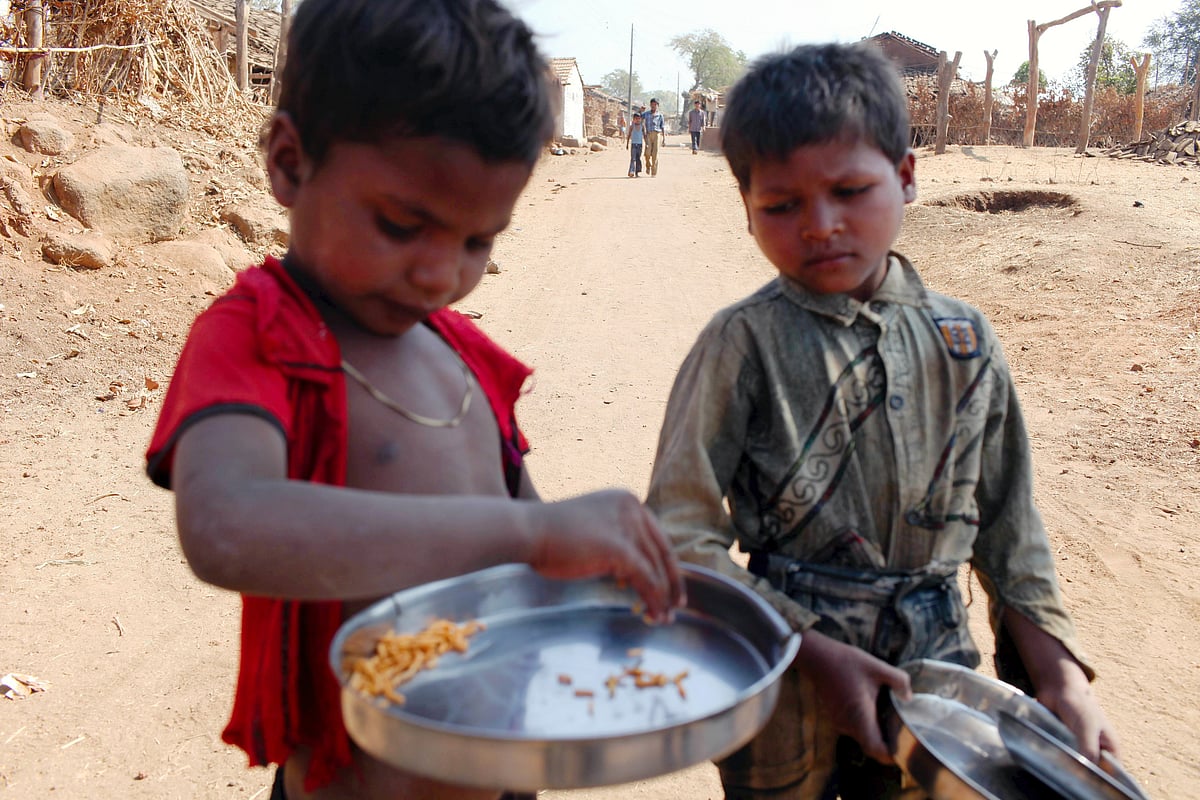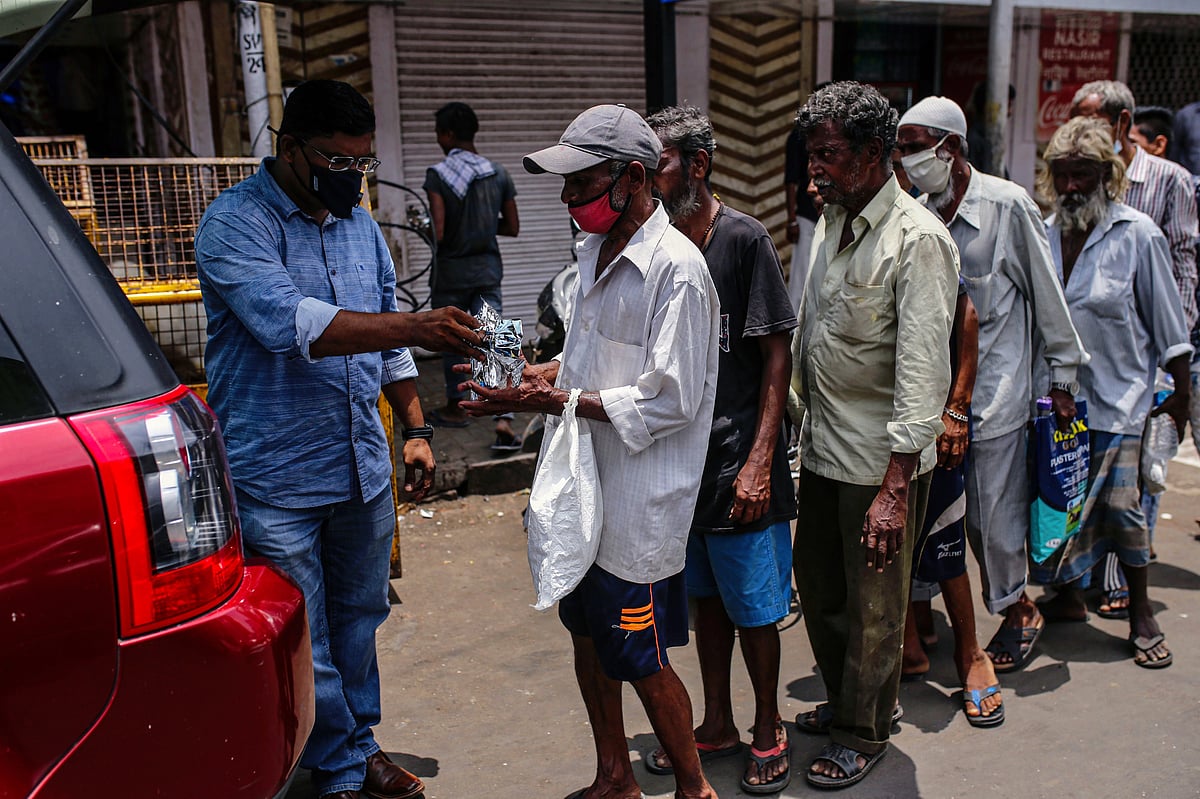Global Hunger Index: Evidence speaks louder than denial
Multiple indices from various agencies, each using different sources, point to a single finding — acute and accelerating nutritional deprivation in India. Can facts be swept under the carpet?

Whatever the differences between fascist parties and movements may be, one element binds them all — the outright rejection of any evidence that contradicts the narrative they spin.
Hindutva at the helm in India is no exception. Its narrative presents India as the fastest growing economy in the world, where people have never had it so good. And if the facts collected by international agencies or even by the government’s own agencies reveal otherwise—why, then the facts must be wrong.
In keeping with the Führerprinzip or leadership principle, who dares contest what the leader has said? Reality is whatever Modi says it is. The rest is conspiracy. There is a fundamental difference between an outright rejection and a critique: critique is intellectually productive.
If the Hindutva elements in power critiqued the evidence, that would be a perfectly worthwhile activity — leading either to refinements in the method of collecting evidence, alternative interpretations of available evidence, or a redirecting of focus to other bodies of evidence. In short, true critique leads to deeper understanding.
Rejection without scrutiny, analysis and validation leads to a cul-de-sac. I illustrate though three instances of such rejections by the Modi government.
The first relates to the 2017-18 National Sample Survey on consumer expenditure. It may be recalled that this was designed and established in 1950 by the distinguished statistician, Prof PC Mahalanobis. Conducted once every five years, it was the largest regular periodic sample survey in the world which, despite limitations, provided invaluable material for generations of researchers in India and abroad.

The findings of the 2017-18 quinquennial survey, however, never made their way into the public domain. The reason? The reports presented a grim picture of the state of poverty in our nation. Not only did the Modi government kill the facts, it killed these surveys altogether.
Some details, however, leaked out before this suppression. Real per capita rural consumer expenditure had declined by as much as 9 per cent between 2011-12 and 2017-18, on the basis of which the proportion of rural population unable to access 2,200 calories per person per day (the original official benchmark for defining rural poverty) was estimated to have increased from 68 per cent in 2011–12 to 78.5 per cent in 2017–18.
Instead of being alarmed by this evidence, or even testing its verisimilitude by conducting a fresh survey (as the UPA government had done in 2011-12 because of the high levels of poverty shown by the original quinquennial survey of 2009-10); instead of setting up a committee of experts to examine the implications of the survey and possible remedial measures that could be adopted, the Modi government simply suppressed the findings and abandoned all future surveys! This is a typical fascist response.
My second example relates to the National Family Health Survey 5 (NFHS-5) that was conducted between 2019 and 2021. This showed that compared to the NFHS-4 (carried out in 2015–16), the incidence of anaemia in both children and women had registered an alarming increase.
While 59 per cent of children between the ages of 6 months and 59 months were anaemic in 2015–16, the figure for 2019–21 had risen to 67 per cent. The incidence of moderate to severe anaemia had risen from 30.6 per cent to 38.1 per cent over the same period, while the incidence of mild anaemia had remained unchanged at 28.4 and 28.9 per cent respectively.
Likewise, among women (up to the age of 49 years) there had been an increase in the incidence of anaemia from 53 per cent to 57 per cent. Rural children and adults showed a higher incidence of anaemia than the average, and children of anaemic mothers were at a higher risk of being anaemic.
What was the government’s response to these findings? It simply suspended, on a trumped-up charge, the director of the International Institute of Population Studies that had carried out the NFHS. (The fact that the suspension was lifted as soon as the director resigned reveals the charge for the fakery it was.)
Once again, a typical fascist response. My third example relates to the Global Hunger Index (GHI), which is calculated on the basis of four parameters: undernourishment, under-5 mortality rate, child stunting (height compared to age) and child wasting (weight compared to height). The GHI for 2023 ranks India at 111 among a total of the 125 countries it covers. India’s rank is remarkably lower than that of our immediate neighbours — Pakistan (102), Bangladesh (81), Sri Lanka (60) and Nepal (69).
Even if one accepts, for the sake of argument, the government’s claim that these parameters are skewed as they only look at children, what the GHI reveals is the terrible condition of children in India as compared to the rest of the world. Is that not enough to take the matter seriously?
But what came forth instead were some ill-informed, facetious remarks in extremely poor taste from a cabinet minister who stated that if anyone had telephoned to ask if she was hungry after a day of travelling, her answer would also have been a ‘yes’. The implication was that the information on under-nutrition going into the GHI — based on polling 3,000 respondents in India — was suspect, thereby warranting a rejection of the GHI as a whole.

Three points need to be made in this context. First, under-nutrition is only one of four parameters entering the GHI; second, even for assessing under-nutrition, the GHI relies not just on polling respondents but also on food balance sheets of each country, derived from official data; and third, the reason for polling respondents lies precisely in the discontinuation of the consumer expenditure surveys that the BJP government had ordered.
The coexistence of acute and growing hunger, together with supposedly high rates of GDP growth, is a perennial feature of neo-liberal regimes. The present fascist regime has continued and accentuated that trend.
The claim that polling respondents to assess hunger is a conspiracy to show India in a poor light is therefore additionally flawed. India has not been singled out—this is the method used across all the other countries, which anyway do not have the elaborate sample surveys that we once did.
Neither can the polling respondent method be blamed as the cause. India’s abysmal rank in the GHI, while hitting a new low this year, predates the use of this method.
When so many different indices prepared by so many different agencies, each using different sources, point to a single finding—acute and accelerating nutritional deprivation in India— how can the facts be swept under the carpet? Denying evidence not only destroys our once carefully designed and established statistical infrastructure, it aims to deny reality.
(Prabhat Patnaik is a noted economist. Courtesy: IPA)
Follow us on: Facebook, Twitter, Google News, Instagram
Join our official telegram channel (@nationalherald) and stay updated with the latest headlines